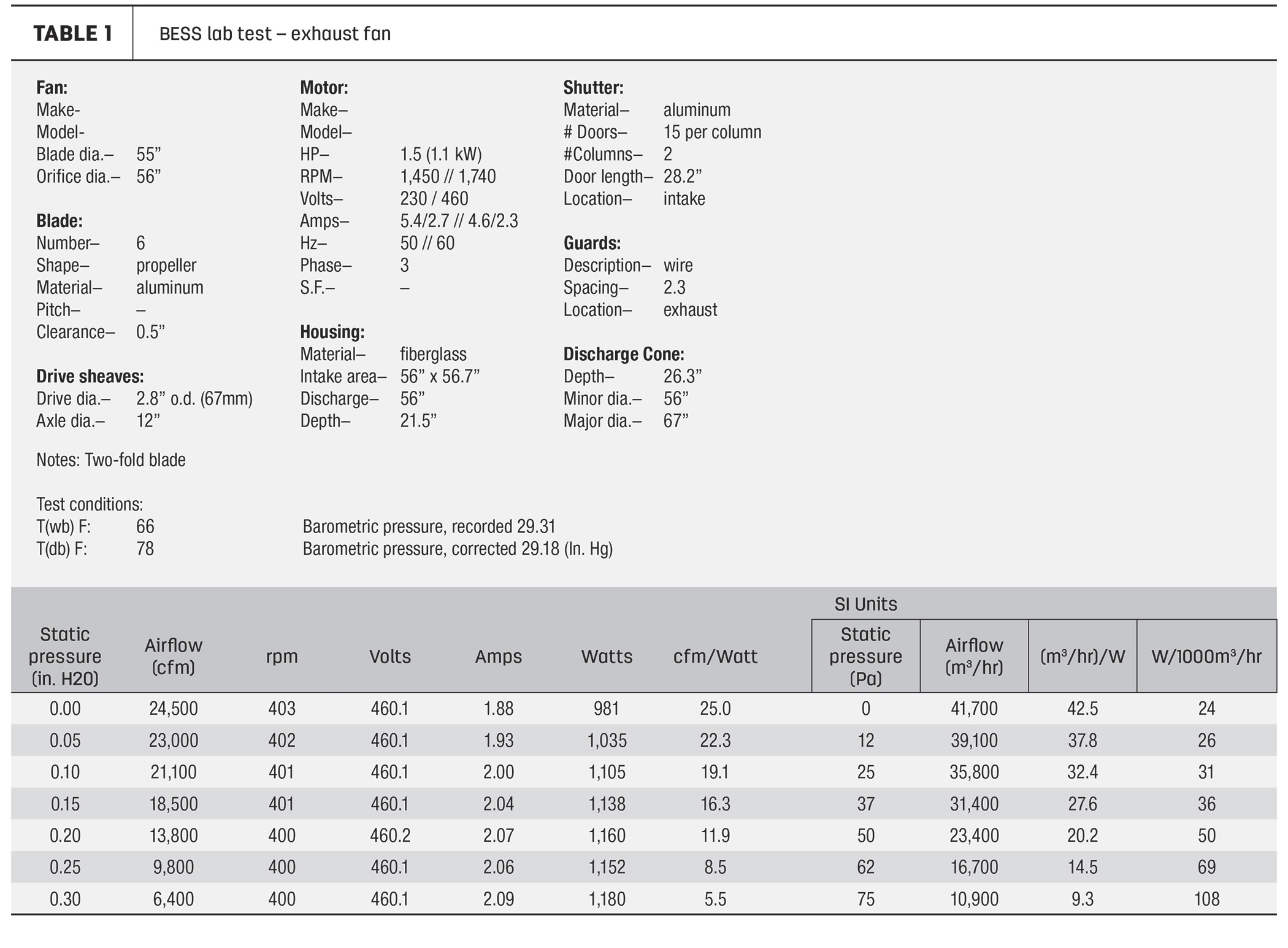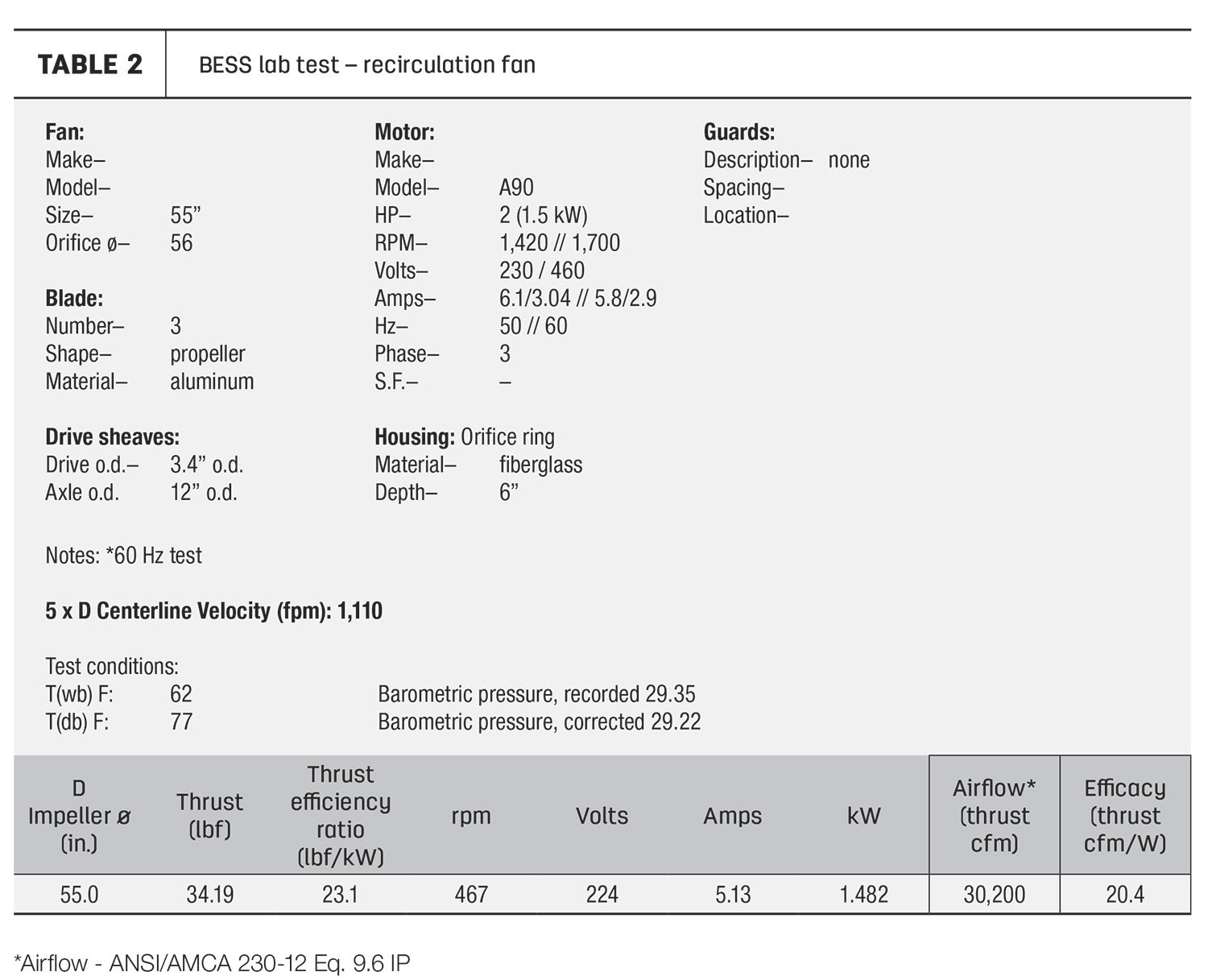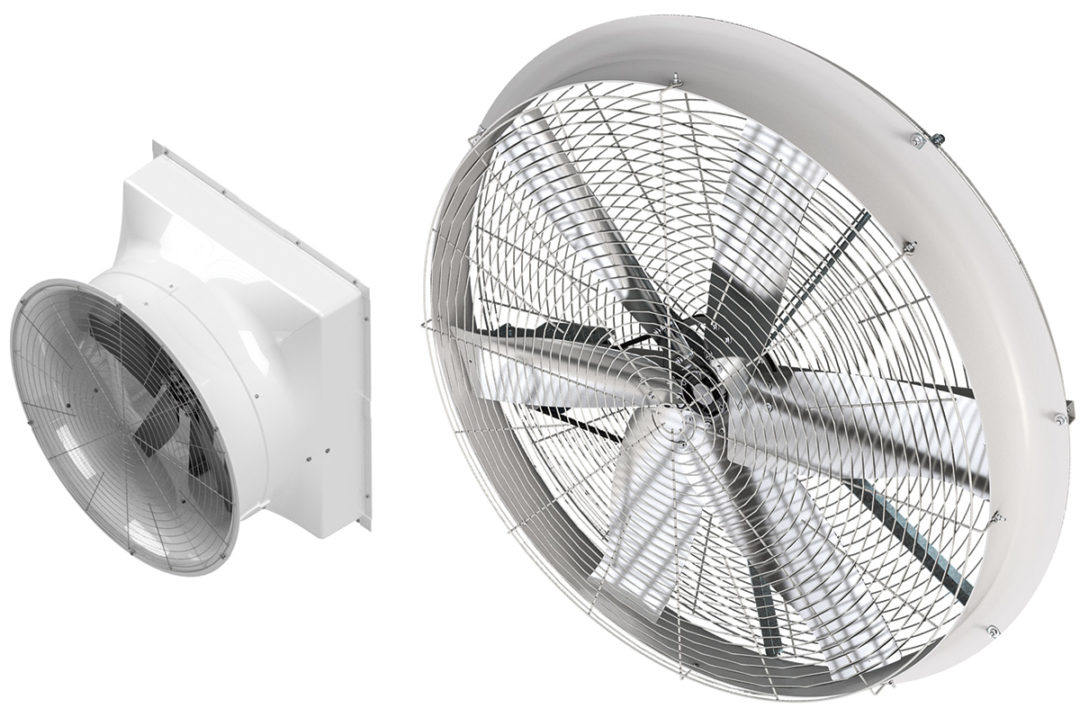To read this article in French, click here.
Fans for use in dairy barns come in a variety of different sizes, shapes, function and materials. While most fan manufacturers offer fans that range in size from 36 inches to 84 inches in diameter, there are some even larger than that. When looking at the variety of fan sizes, the differences in shape soon become apparent. Options range from round panel fans, box fans, exhaust fans, high-volume low-speed (HVLS) fans and basket fans. Each different shape and style of fan is meant to serve a different function. Add in the fact that there are many different materials used in building these fans, and it seems like an impossible task to select one fan over the other. It becomes so difficult to compare fans that it feels like we are no longer comparing apples to oranges and instead are comparing chalk to cheese.
So, how do we make sense of all these options available to dairy producers, when fan manufacturers and sales reps are all sure that they are the only ones with the best possible fan and everything else is inferior to their product? The first thing to understand is that there are two main types of fans – exhaust-style fans and circulation-style fans. Exhaust fans are used to pull or draw air through a space using negative pressure, and circulation fans are used to move air within a required space. Each of these fan types has specific and different requirements to be effective and efficient at the job they are designed to accomplish, which can be objectively tested and measured.
One of the key tests for exhaust-style fans is to measure their airflow in cubic feet per minute (CFM), and energy consumption in watts, at various levels of static pressure. We can then use this to give the fans an efficiency rating of CFM/watt at the different pressure levels. When comparing different exhaust fans and their efficiency ratings, airflows and power usage, the range of these values can seem overwhelming at first. However, once we remember different fans are designed for different purposes, the variance in these numbers makes much more sense. Some fans are designed to move as much air as possible, some are designed to be as efficient as possible and some are designed to achieve a certain performance at a very specific pressure value. So, when comparing exhaust fans, it is important to understand what your requirements are.
When we look at recirculation fans, they are tested in a different manner, since they are built to achieve a different result. Recirculation fans are tested on how much air they move in thrust CFM. This is tested and measured by having the fan blow against a load cell. The fan's power consumption can also be tested, allowing it to get an efficiency rating of thrust CFM/watt. The airspeed at a distance of five times the diameter is also tested, which provides an indication of the distance the fan can throw the air.
The Air Movement and Control Association (AMCA) sets testing procedures and requirements for fans. This ensures that all fans are tested to the same standards and use the same methods so that we can get a true comparison. So, when comparing different fans, it is imperative to get independent lab-tested data. It is also important to note which AMCA standard the data was tested to, as the testing methods and technologies have changed over the years.
BESS Labs is an independent laboratory at the University of Illinois that is certified by AMCA to test both recirculation fans and exhaust fans. The test results are often on their website, which allows for them to be publicly accessible. This transparency in how fans are tested and what the numbers mean allows customers to make an informed choice about which fan is the most appropriate for their application. When listening to a sales pitch, always ask for the test data to support the numbers that you are hearing. Most salespeople will be able to back up their claims by providing you with documented test data. One thing to note is that, for test data to be accurate, the model number of the fan should match the test report. A small change, like an increase or decrease in the size of the motor pulley, can drastically alter the data, showing either greater performance or efficiency.
Besides performance and efficiency, material construction is also something to keep in mind when comparing fans. Fans can be made from a wide variety of materials that will affect the costs and potential lifespan of the fan. A fan constructed of stainless steel will be more resistant to harsh conditions but will also cost significantly more than a fan constructed using other materials.
While sifting through test data and fan specifications may seem as boring as watching paint dry, putting in the time and effort to do some research will ensure that you are better equipped to select the appropriate fan for your project.
A few things to note on the sample exhaust fan test (see Table 1):
- The information above the test results table gives the fan information, such as size, motor information, etc.
- The test data table shows the fan performance at varying static pressure points. You will notice a decrease in airflow and an increase in watts as the pressure increases.

A few things to note on the sample recirculation fan test (see Table 2):
- The information above the test results table gives the fan information, such as size, motor information, etc.
- Look for the 5 x D centerline velocity.
- The test data shows the fans' measured performance based on thrust CFM.










